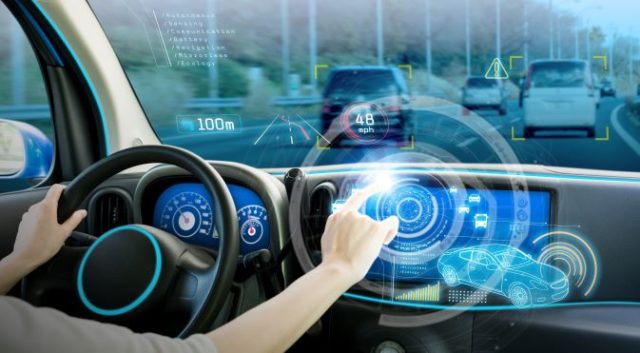Kelley Blue Book, the folks who bring you vehicle sale value guides, has issued what it has decided are the 10 best automotive technologies of 2021.
“In 2021, we continue to be amazed by the incredible advancements made by automakers, as the technology within a vehicle deserves as much consideration as the mechanics under the hood,” said Matt DeLorenzo, senior managing editor for Kelley Blue Book.
It should also serve as notice to the automotive aftermarket of just how far the emphasis of automotive technologies has moved from performance and efficiency to safety, infotainment and convenience.
10 Best Automotive Technologies of 2021
Advanced Driver Assist Systems
These systems can react to hazards, reduce driver fatigue, and even park the car. Shoppers seeking technologies like adaptive cruise control, lane departure warning, lane-keep assist, blind-spot alert, cross-traffic alert or reverse brake assist can secure these services as standalone options or in bundled suites, such as Ford’s Co-Pilot360, Subaru’s EyeSight, and Toyota Safety Sense, among others.
Automatic Emergency Braking (AEB)
AEB is a part of many advanced driver-assist systems, and it’s becoming more common. Often a standalone feature, it can sense a potential accident before the driver does and immediately apply full brake pressure to stop the vehicle quickly, possibly preventing a collision.
Connected Mobile Apps/Digital Key
Carmakers continue to offer the next evolution of connected smartphone apps that can remotely lock and unlock the doors, check the fuel level and tire pressure, and even remotely start the car. Additionally, the digital key has extra security measures built in to link individual vehicles to owners.
Teen Driver Technology
Teen Driver – offered exclusively by General Motors – serves as a safeguard for new drivers, allowing owners to be notified if the car is driven over a certain speed or if seatbelts aren’t in use, and to set a volume limit on the sound system. There is even a report card that will tell parents if safety systems like ABS or forward collision alert have been triggered.
Exit Warning to Protect Cyclists
The exit warning alert uses rear-looking sensors to detect approaching bicycles and traffic, ensuring that a passenger doesn’t open a car door as a cyclist passes. The most advanced systems will even physically lock the door to prevent it from being swung open into the path of the approaching object.
Wireless Smartphone Charging and Connectivity
Most vehicles today offer audio connectivity through Apple CarPlay or Android Auto. Wireless connectivity allows drivers to stow their phone anywhere within the vehicle instead of tethering it to a USB port. These features can also be enhanced through wireless charging, which typically uses a charging pad that is easy to set up and use.
360-Degree Camera
A 360-degree camera changes the way drivers park cars by providing increased confidence, visibility, and safety. Cameras on every side of the car combine to show a virtual top-down view of a vehicle’s surroundings. This enhanced visibility can prevent dents and scratches – and can even reduce insurance claims from low-speed crashes.
Video Rearview Mirror
A video rearview mirror uses a rear-mounted camera to display the view behind the car in the same position as a rearview mirror, allowing drivers to toggle between the mirror view or the video setting as needed. This is particularly helpful for drivers when their view may be impeded by distractions or objects within the car preventing clear line of site.
Stolen Vehicle Tracking Software
With hundreds of thousands of vehicles stolen each year, built-in tracking technology affords a new level of security for car owners. In addition to its ability to locate a vehicle’s exact location for law enforcement to recover it, this software also provides diagnostics, concierge, and post-crash notifications for rescue services. The technology is part of assistance and security systems, such as Subaru Starlink, Kia UVO, Hyundai Blue Link, and GM OnStar.
Blind-Spot View Monitor
A video-based blind-spot view monitor uses a small camera on either side of the car to display traffic in adjacent lanes, which aide in the prevention of collisions during lane changes. Genesis, Kia, and Hyundai vehicles each offer particularly easy-to-see displays within the gauge cluster.
For additional information on the 10 Best Automotive Technologies of 2021, visit https://www.kbb.com/awards/best-car-technologies/.


0 Comments